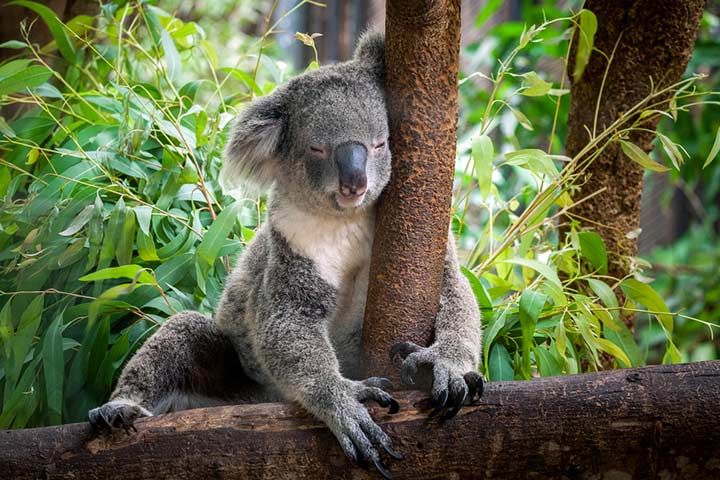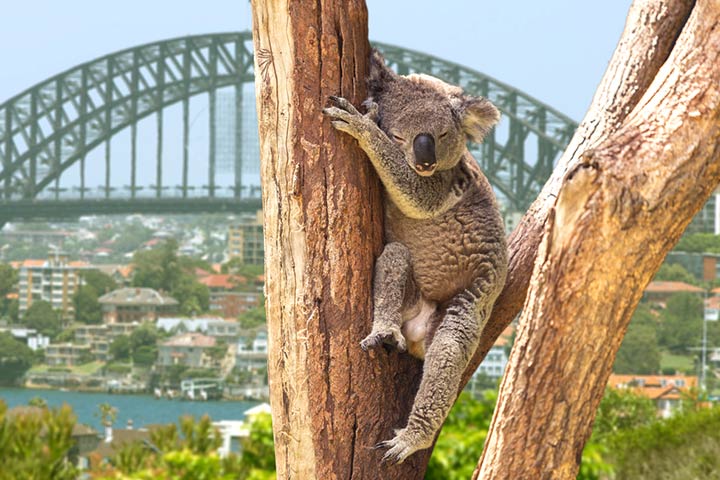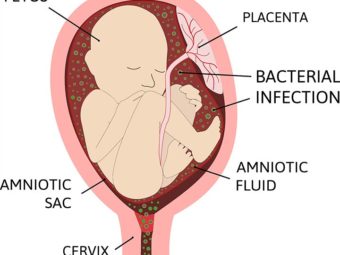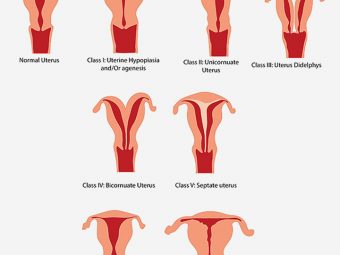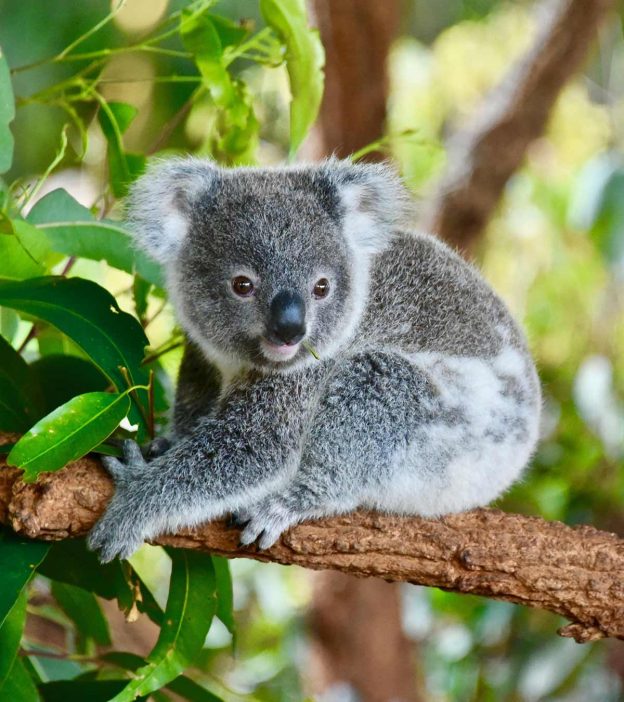
The koala is an Australian marsupial that lives on trees. Interestingly, they are called “koala bears” but are not bears. Learn more about fascinating koala facts for kids by reading this post. The koala is a furry and cuddly herbivore and can be mostly seen clinging to the trees with sharp claws like cats. Its cuteness and calm nature make it everyone’s favorite. Read on for more interesting facts about this fuzzy creature.
Quick Facts About Koala
| Scientific name: | Phascolarctos cinereus |
| Size: | 24-33 inches (60-85 centimeters) |
| Weight: | 20 pounds (almost 10 kilograms) |
| Lifespan: | 10 - 15年in wild, 18-20 years in captivity |
| IUCN conservation status: | Vulnerable |
Name & taxonomy
- Theoriginsof the namekoalacome fromGula, the Aboriginal (native Australian) word for the animal.
- Early European settlers in Australia thought theanimal resembleda bearand began calling it the ‘Koala bear’. But koalas are not bears and are not related to them either.
- Koalas are theonly living membersof the biological familyPhascolarctidae.
- The animal belongs to thebiological infraclasscalledMarsupialiaand is related to othermarsupials, many of which, such as the kangaroo, also live in Australia.
Lifespan
- A koala can live up to10 - 15年在野外。
- Koalas in captivity may live up to18-20 years.
外观
- Koalas have a furry appearance with a prominent black nose andfurry ears. If you look closely, you’ll figure out that thekoalas do not have tails!
- Theaverage sizeof a full-grown koala is24-33in (60-85cm ).Theaverage weightof a full-grown koala is around20oz (almost 10kg).
- Male koalasare almost50% largerthan females. The males also havechest glands,which are visible as small hairless patches on their chest.
- There arethree subspeciesof the koala, each found in three different parts of Australia. They are theQueensland koala, New South Wales koala, andVictorian koala. TheVictorian koalais thelargestand theQueensland koalathesmallest. Victorian koalas have thicker, brown-colored fur.
Habits & lifestyle
- The koalas spend most of theirwaking hours eatingeucalyptus leaves. Since a diet of leaves provides very little energy, koalasspend up to 18 hours a dayasleep to conserve energy.
- The koalas even smell of eucalyptus, since they consume plenty of eucalyptus leaves every day! Some say their odor is similar to that of acough dropcontaining eucalyptus oil.
- In hot weather,koalas cling tothe treetrunkswhile sleeping. It helps them cool off quickly.
- Koalas areasocial animals. The only group of koalas you will see is that of a female koala and her young ones. Socialinteraction is very minimal只会发生,如果两个koal的领土as overlap. Male koalas maywander in search of a female mate,but they leave after mating. Only females raise the young ones.
Reproduction
- A baby koala is called ajoey, the same name as that of a baby kangaroo.
- The gestation period (pregnancy) in a koala is about33 to 35 days.
- Koalas usually give birth to onlyone joey, and twins in rare cases.
- Koalas are marsupials and produce atiny, underdeveloped young one. Immediately after birth, the joey crawls into themother’s pouchon her belly, where it feeds on milk and stays for six months.
- A female koala’s pouchopens to the bottom, unlike a kangaroo’s pouch that opens on the top. The koala shares the bottom-opening pouch attribute with a wombat, its closest relative.
- Joeys begin stepping out of the pouchafter six months. Initially, they only peek out of the pouch and then ride on their mother’s back. Joeys continue tofeedon mother’s milk until theage of 12 months.
Diet
- Did you know? Thekoalas only feed on the eucalyptus plant, with the leaves being the staple diet of the animal. Koalas mostly eat during the night.
- A fully grown koala may eat up to one kilogram of eucalyptus leaves in a day.
- A koala gets all itswater from its dietof eucalyptus leaves. Koalas barelydrink waterand maysearch for wateronthe forestfloor or within the hollows of a tree only in hot weather.
- The koala’s body hasseveral adaptationsto suit itseucalyptus-leaf diet. Sharp clawsallow it to grab the branches that are at a distance and also hold to the tree securely. Koalas also have alonger intestineto allowmaximum digestion of the leavesthrough fermentation by the gut bacteria.
Habitat & endangerment
- Koalas areindigenous to Australiaand are not found anywhere else in the world. The animal resides only on the eastern end of the continent.
- 考拉需要一个large territoryof about100 trees. Australia’s forests are shrinking rapidly and considering that the country is an island, there islimited space for koalasto spread out. It puts the animal at risk of habitat loss.
- Thenative Aboriginal populationof Australia regularlyhunted the koalasfor food and fur. However, it seldom caused any decline in the koala population.
- European settlement of Australia led to widespread hunting of the koalas. The early 20th century saw thekilling of nearly 800,000 koalas, which reduced the koala population drastically.
- Koala conservation started in the1930s. Today, the koala isextensively protectedby several government programs that aim at maintaining a healthy population of the species.
- Loss of habitatis the leading threat for koalas. More forests are being cleared today foragricultureandurbanizationcausing koalas to venture into urban zones. Koalas are vulnerable tovehicle collisionson highways andattacksfrom domestic animals.
- Australia haslost almost 80% of the koala habitat. It is causing increased stress on the animal, which in turn seems to increase the incidence of a bacterial, sexually-transmitted infection calledchlamydiaamong koalas.
- The estimated number ofkoalas in the wild is less than 90,000, and the numbers are fast decreasing.
- International Union for Conservation of Nature (IUCN) rated the animal ‘vulnerable’ in the year 2016. Koala conservation activists are striving to get the rating changed to ‘criticallyendangered’ to get more attention to the plight of the animal and also help improve its chances of long-term survival.
Koala in society & culture
- 考拉通常可以found in captivity, especially in zoos across Australia. Human caretakersraise orphaned baby koalasin zoos. Koalas are still wild animals and cannot be domesticated.
- The endearing looks of koalas make themvery popular among children. Koalas have been portrayed ascharactersin several children stories written by Australian writers. This image of an adorable animal has also helped garner global attention and support towards conservation of the koala in Australia.
常见问题s
1. Do koalas have two thumbs?
Yes. Koalas have two thumbs that help them to grip the branches firmly and move from one tree to another (1).
2. Can koalas swim?
Yes, koalas can swim, but they will drown if they do not find something to hold on to and climb out of the water (2).
3. Do koalas have fingerprints?
Yes, koalas are among the few animals who have fingerprints like humans. These fingerprints are unique to each koala (1).
Koalas are usually peaceful and timid, and they rarely cause difficulties for humans. But, the rising human population and territorial expansion have resulted in a reduction in suitable habitats for these marsupials. Fortunately, their situation has not deteriorated further. To safeguard the koala, all that is required is to respect the animal’s native habitat and to be aware of them in urban areas. Knowing these koala facts for kids will pique their interest in these cute, bear-like animals and urge them to participate actively in their conservation efforts.
Have you ever seen a koala in the wild or captivity? Tell us in the comment section below.
References:
- Koala-ty facts about koalas.
https://www.clevelandzoosociety.org/z/2020/04/07/koala-ty-facts-about-koalas - Koalas.
https://www.wildcare.org.au/Documents/koalas/Koala%20Facts.pdf




